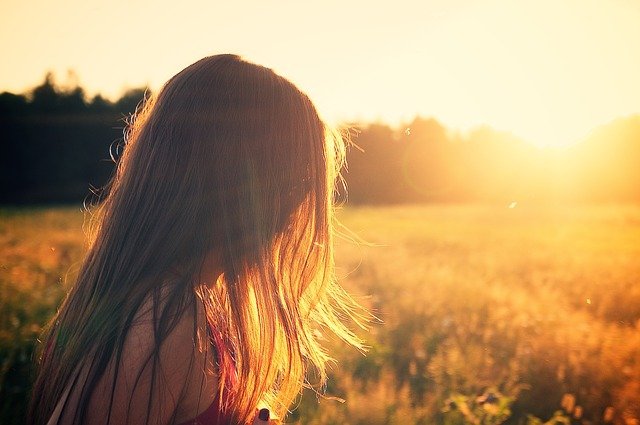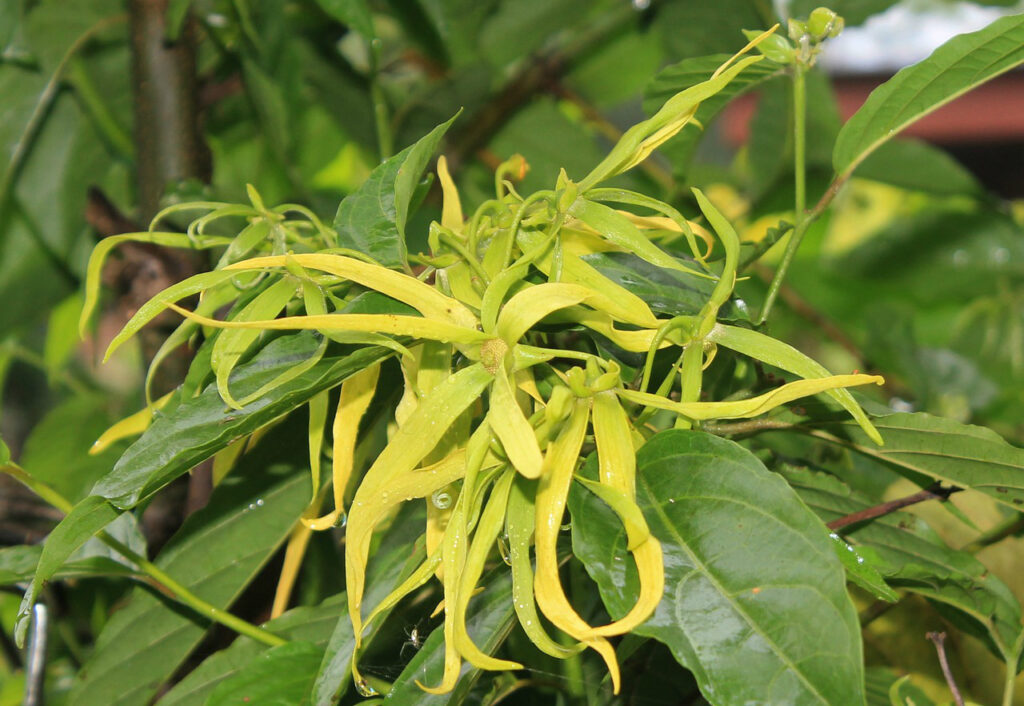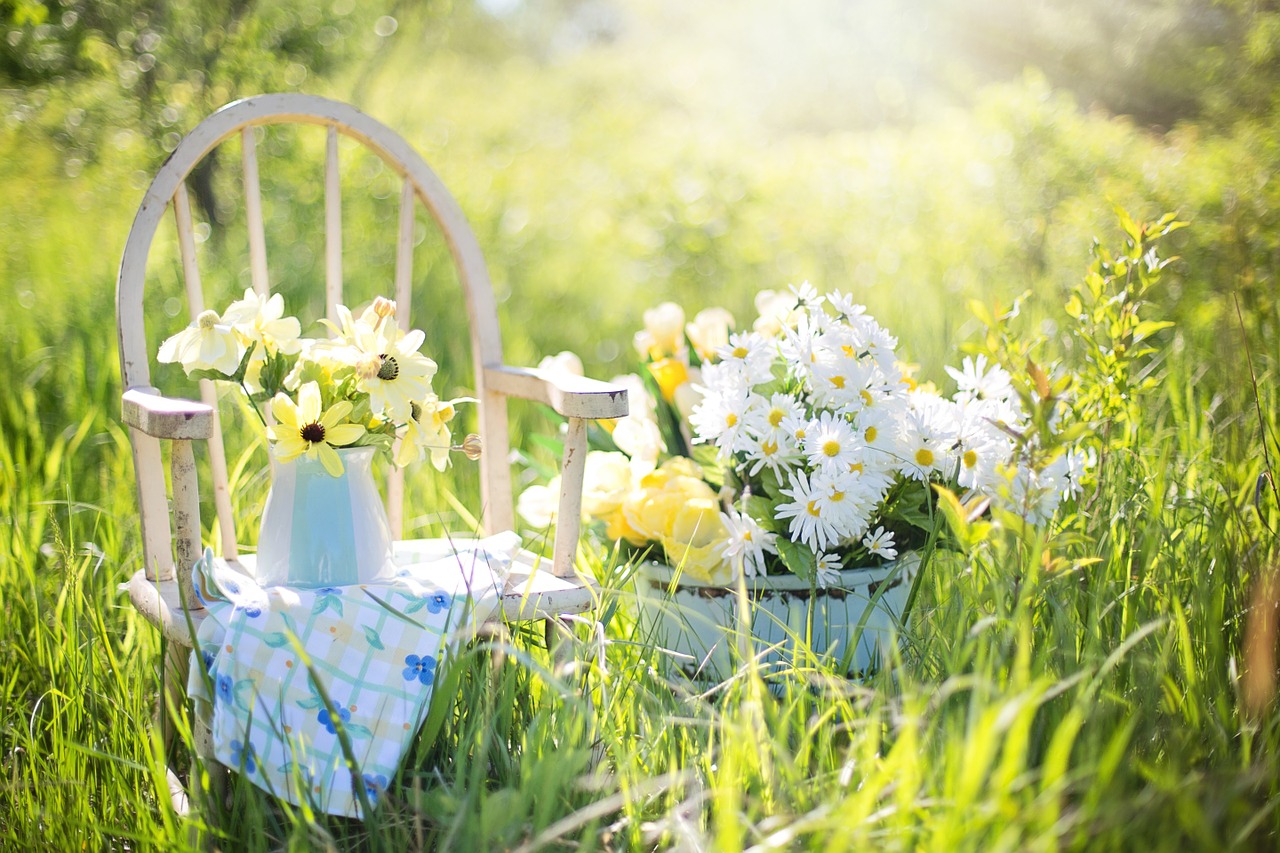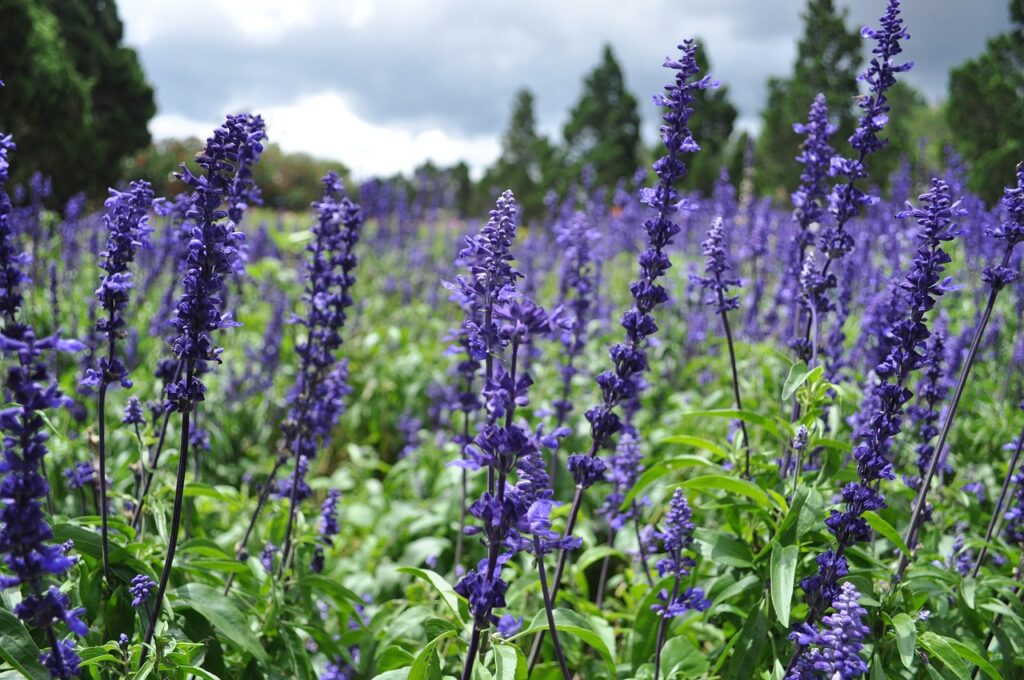What You Need to Know: Ylang Ylang Essential Oil
First things first, what exactly is ylang ylang oil, and how do you pronounce it? It is said as ee-lang ee-lang. This fragrant oil is extracted from the flowers of the ylang ylang tree, a tropical evergreen known for its lush, star-shaped blossoms and rich, sweet aroma.
- How Is the Oil Made?
- What Can Ylang Ylang Oil Be Used For?
- Ylang Ylang For Your Skin
- Ylang Ylang For Your Hair
- PMS Relief
- Muscle Relief
- Ylang Ylang for Peace and Tranquility
- Precautions
- Ylang Ylang Essential Oil FAQs
- What is ylang ylang essential oil used for?
- Can ylang ylang essential oil help with relaxation?
- Is ylang ylang essential oil good for skin care?
- Can ylang ylang essential oil be used for hair?
- How do you apply ylang ylang essential oil?
- Are there any precautions when using ylang ylang essential oil?
- Which carrier oils blend well with ylang ylang essential oil?
- What essential oils pair well with ylang ylang?
- How much ylang ylang essential oil should be used in a diffuser?
- Can ylang ylang essential oil be added to bath water?
The ylang ylang tree is native to the wild jungles of Indonesia and the Philippines, where its scent fills the warm air. Often called the “perfume tree” or “fragrant cananga,” it has long been valued for both its beauty and its captivating fragrance. It is no surprise that the oil is widely used in high-end perfumes, natural skincare, and aromatherapy blends.
And honestly, who would not want a “perfume tree” growing in their own backyard?
How Is the Oil Made?
Ylang ylang essential oil is derived directly from the fresh blossoms of the ylang ylang tree. Right after harvesting, the flowers are carefully steam distilled through a three-stage process to extract the fragrant oil.
Each stage of distillation produces oil with slightly different properties, giving ylang ylang its variety of grades. Because there are no universal standards for how long each stage lasts or how the grades are labeled, one company’s “extra” or “first” distillation may differ from another’s. As a result, the ylang ylang oil you purchase might be a blend of several distillations or come from just one specific stage.
The first stage of distillation produces the most refined oil, known for its delicate, floral top notes and use in high-end perfumes and aromatherapy blends.
- This high-quality “first stage” oil is known as “Ylang Ylang Extra.”
- Subsequent distillations produce oils with different scent profiles. The common (but unregulated) “grades” are:
- Ylang Ylang Extra: The first (and most prized) distillation.
- Ylang Ylang I, II, and III: The second, third, and fourth distillations, with the aroma becoming less floral and more “green” as the process continues.
- Ylang Ylang Complete: A blend of all the different distillations.
- It’s helpful to know which distillation you’re getting before purchasing, as “Extra” and “Complete” are often preferred for aromatherapy.
To learn more about the lack of standardization in the essential oil industry, read this:
Where to Buy Essential Oils: Important Facts You Need to Know
What Can Ylang Ylang Oil Be Used For?
Ylang ylang essential oil has many wonderful uses. Its sweet, floral fragrance makes it a favorite in natural perfumes, homemade candles, and room sprays. Beyond its scent, many people turn to this oil for its calming and mood-lifting effects. It is often used in aromatherapy to help ease tension, reduce feelings of stress, and encourage relaxation after a long day.
Some studies suggest that ylang ylang may help promote a sense of peace and emotional balance. Its aroma can create a soothing environment that supports rest and mental clarity.
There are also claims about ylang ylang offering other physical benefits, though research in these areas remains limited. You are encouraged to explore the evidence for yourself and decide what feels right for your personal wellness routine.
Other Potential Benefits of Ylang Ylang Essential Oil and available studies:
- Bladder control agent (source)
- Antioxidant properties (source)
- Blood pressure reducer (source 1, source 2)
- Hornet and Yellow-jacket repellent (Hymenoptera: Vespidae), (source)
Other studies have been performed with ylang ylang oil beyond the ones we mentioned above. If you’re really into researching these kinds of things and would enjoy educating yourself (like we do) on the subject, it’s important to find the actual published studies.
Ylang Ylang For Your Skin
Ylang-ylang oil is also known to have skin-improving abilities, thus giving your skin a healthy glow and a nice complexion. You can also try applying it to smooth away wrinkles and prevent aging. Given its natural antibacterial properties (source), it may also prevent unwanted breakouts.
This oil is great for all skin types because it will not only improve skin elasticity but also help balance the naturally occurring oil that your skin already produces.
However, as with most, if not all, essential oils, we do not recommend that you apply pure ylang ylang oil directly onto the skin. Instead, mix it with a carrier oil like fractionated coconut oil to prevent skin irritation.
Ylang Ylang For Your Hair

Everyone wants healthier-looking hair, right? Absolutely! This oil is great if you want to give your hair that healthy glow you’ve been wanting to get for so long. As I mentioned, ylang ylang can help balance the oil your skin naturally produces. That means it’s perfectly suited for use in a scalp massage blend.
Try mixing 1-2 drops of ylang ylang oil with some virgin coconut oil for a relaxing, hair-rejuvenating scalp massage.
Furthermore, there have even been a few small clinical studies in regard to ylang ylang oil’s toxic effect on lice eggs! There hasn’t been a lot of extensive research on it, so it may not be a “miracle oil” in regard to uses pertaining to lice treatment. But things do appear to be headed in the right direction (source).
The oil works great as a natural hair conditioner, too. If you mix it with coconut oil, it will surround each strand of hair with moisturization that will give your hair a fabulous shine.
Ylang Ylang Natural Homemade Conditioner
What You’ll Need
- 1 to 2 drops ylang ylang essential oil
- 1/4 cup fractionated coconut oil (60 mL) or your favorite conditioner
Directions
Mix the ylang ylang oil into the coconut oil or conditioner. Massage the blend through your hair, starting at the roots and working down to the ends. Use a wide-tooth comb to help distribute it evenly and boost moisture absorption.
When rinsing, you may want to add a small amount of natural shampoo so your hair does not feel greasy. This simple treatment leaves your hair soft, shiny, and lightly scented with ylang ylang’s beautiful floral aroma.
PMS Relief
Ylang ylang essential oil is often used for its hormone-balancing and calming properties, making it a helpful support for PMS symptoms. Its soothing aroma can ease tension and stabilize mood during hormonal changes.
If you have a diffuser, try this PMS Balance Blend:
- 1 drop ylang ylang oil
- 1 drop lavender oil
- 2 drops clary sage oil
- 1 drop geranium oil
Some blends exclude lavender, but it adds a refreshing note that complements the other floral oils. Try it both ways to see which version you prefer.
Muscle Relief
Ylang ylang oil is also a wonderful choice for massage. It not only promotes emotional relaxation but also helps ease tired or tense muscles.
Ylang Ylang Massage Blend
- 2 drops ylang ylang essential oil
- 1/4 cup melted virgin coconut oil (60 mL)
Allow the mixture to cool slightly before use. For more fragrance variation, add a few drops of lavender, jasmine, sandalwood, or another favorite essential oil.
If you prefer a liquid texture, substitute with jojoba oil or fractionated coconut oil instead of solid coconut oil.
Avoid applying undiluted essential oils directly to the skin, as their high concentration can cause irritation or sensitivity. Always dilute properly to ensure safe use.
Ylang Ylang for Peace and Tranquility
Known for its calming and uplifting effects, ylang ylang essential oil is often used to promote peace, relaxation, and emotional balance. Whether you simply enjoy its exotic floral scent or want to unwind after a busy day, this oil makes a wonderful addition to your evening routine.
Try adding a few drops to a warm bath for a luxurious, fragrant soak that helps calm your mind and melt away the stress of the day. Sometimes the simplest moments of self-care can bring the most tranquility.
Ylang Ylang Bath Oil Recipe
- In a small bowl, combine 1 tablespoon (15 mL) of a carrier oil (like jojoba or fractionated coconut oil) with 8-10 drops of ylang ylang oil and 8-10 drops of grapefruit oil.
- Mix this oil blend into 2 cups of Epsom salts.
- Add the salt mixture to a full, warm bath and stir to dissolve.
- Light some candles, turn on some relaxing music, and let all your worries drift away.
Feel free to add Ylang Ylang essential oil to other homemade bath powder recipes you may already be using.
Precautions
Always dilute ylang ylang essential oil with a carrier oil before applying it to your skin. Like most essential oils, pure ylang ylang is very concentrated, and direct application can cause irritation, especially for sensitive skin. Mixing it with a carrier oil such as coconut, almond, or jojoba makes it safe to use while keeping its soothing benefits. When properly diluted, there is no need for concern.
At Enticingly Simple, we want you to understand both the benefits and the safe use of ylang ylang essential oil. Whether for wellness or beauty, this floral oil is a versatile and valuable addition to your collection. Many aromatherapists consider it a staple they would never want to be without.
Once you experience the rich, floral aroma of ylang ylang, you may find it becomes one of your favorite essential oils.
Ylang Ylang Essential Oil FAQs
What is ylang ylang essential oil used for?
Ylang ylang oil is valued for its floral fragrance and is commonly used in perfumes, aromatherapy, and natural hair and skin care products.
Can ylang ylang essential oil help with relaxation?
Yes. It is often used in aromatherapy to promote relaxation, reduce stress, and create a sense of calm.
Is ylang ylang essential oil good for skin care?
Yes. Ylang ylang is known for its moisturizing and balancing properties, making it a popular ingredient in products that help maintain healthy-looking skin.
Can ylang ylang essential oil be used for hair?
Ylang ylang oil is often added to conditioners and treatments to help strengthen hair and improve shine.
How do you apply ylang ylang essential oil?
You can use it topically when diluted with a carrier oil, add it to a diffuser for aromatherapy, or mix a few drops into your bath or skincare routine.
Are there any precautions when using ylang ylang essential oil?
Always use ylang ylang oil in moderation and dilute it before applying it to your skin. Perform a patch test first to check for any irritation or allergic reactions.
Which carrier oils blend well with ylang ylang essential oil?
Jojoba, coconut, and sweet almond oils are excellent carrier oils that mix well with ylang ylang for topical application.
What essential oils pair well with ylang ylang?
Lavender, bergamot, and rose oils complement the floral aroma of ylang ylang and can be blended for aromatherapy or homemade products.
How much ylang ylang essential oil should be used in a diffuser?
Typically, 3 to 5 drops per 100 mL of water is sufficient, but always follow the directions that come with your diffuser.
Can ylang ylang essential oil be added to bath water?
Yes. Mix a few drops with a dispersing agent such as Epsom salt or a carrier oil before adding it to your bath. This helps the oil blend evenly with the water and enhances relaxation.


